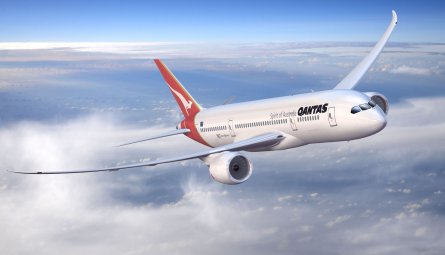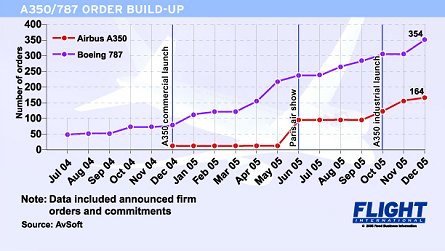Airbus’s chief salesman John Leahy may be having some quiet time to himself to ponder the loss of the Qantas deal on his way back from Sydney. For a senior colleague had joked prior to the announcement that, if Leahy did not return from Australia with the order, he should “come back by boat”.

Although Airbus has had a great year sales-wise, with almost 700 orders so far across its range, it must be frustrated by the advantage that Boeing has gained in the widebody markets as the 777 and 787 rack up the orders at the expense of the A340-500/600 and A350. The decision by Qantas to order 45 787s, and take options and commitments for a further 70 to replace its 767s, is the latest key win by Boeing in a year that has seen it rack up almost 300 orders for its new “plastic fantastic” twinjet, against 164 for its more conventionally-structured rival, giving the 787 almost a 70% market share.
But Airbus will be quick to point out that the year is not over yet.
Qantas chief executive officer Geoff Dixon says that a guarantee from Boeing of first deliveries in 2008 was a “big determinant” in its selection – the A350 is not available until mid-2010 at the earliest.
The 787 had a number of factors in its favour, including price, groundbreaking technology, fuel efficiency and range, he says. The tender process between the two manufacturers was highly competitive, with “quite outstanding” bids from both, says Dixon. The list price for the 65 firm and optioned aircraft is A$13 billion ($9.8 billion), with Qantas negotiating “an extremely competitive price”, he adds.

Initial 787-8 deliveries will go to Qantas low-fare arm Jetstar, with the first aircraft for mainline operations arriving July 2009. The order includes the stretched 787-9, which will follow from 2011.
The Australian carrier is one of several major Airbus widebody operators to switch sides this year, following decisions by Air Canada and Northwest Airlines to take the new Boeing. It is a credit to Boeing’s sales and marketing effort that it can come up with such a revolutionary design incorporating an all-composite fuselage and succeed in assuring so many blue chip customers that it will meet its delivery and performance guarantees. This may be something that Airbus has struggled to do after its recent issues with the A340-500/600’s in-service reliability and the A380’s programme slippage.
“Whereas Boeing is viewed as an engineering-led company, Airbus is seen as being sales-led,” one chief executive of a 787 customer airline told Flight International recently. “The 787 is superior...Airbus can compete by being cheaper.”
Airbus could also be paying the price for underestimating how the 787 would stir up the market. The evidence speaks for itself, as between them the A350 and 787 have secured almost 520 orders since All Nippon Airways set the ball rolling with its 50-aircraft deal for the Boeing twinjet in July 2004.
When the 787 first appeared publicly in early 2003 as the “7E7”, Airbus clung to the belief that it could compete against the new Boeing with the A330, before formally responding with a major derivative – the A350 – in December 2004. Worryingly for Airbus, the vast majority of the 787’s orders have been placed since the A350 arrived on the scene last year.
But Airbus has been playing catch up right from the start, making several major design iterations before the December 2004 unveiling, and several more since as potential customers pressed the manufacturer to try even harder. The aircraft is now almost all-new, but significantly retains the A330’s wing planform and external fuselage cross-section.
The latest specification, issued in November, seems to have finally hit the target, with one of the A350’s critics International Lease Finance, declaring itself now happy with the configuration and signing for 12. But it still was not enough to convince Qantas. However, Boeing still faces some huge technical challenges with the 787, so there is plenty of opportunity for Leahy and his A350 to have the last hurrah.
A number of key campaigns await in 2006, with airlines such as Emirates, Etihad, Lufthansa, and Singapore Airlines all likely to buy one or the other. And despite Seattle’s head start, analysts believe that in the long-term there is plenty of room for both products. Airbus and Boeing both forecast a 20-year market in the A350/787 category for over 3,000 aircraft, so even the loser can expect to sell at least 1,000 units.
MAX KINGSLEY-JONES/LONDON
Additional reporting by EMMA KELLY in Perth
Source: Flight International























